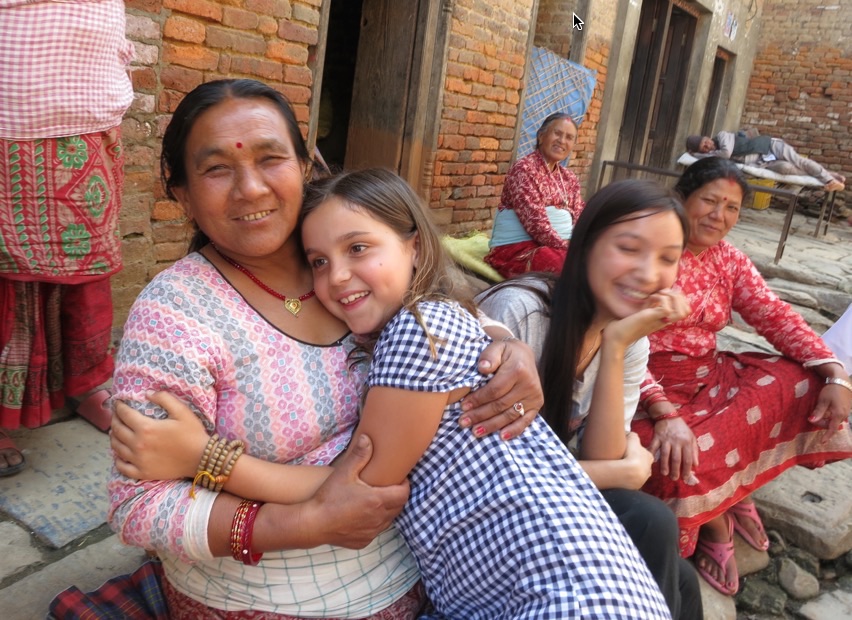A week ago I spent the weekend in Kathmandu, in between meetings in Dhaka, Bangladesh, and Dharamsala, India.
Nepal was love at first sight for me 21 years ago when I first went on a fellowship to help gain support for children’s organizations by capturing their work photographically. That time in large part inspired our current work at Micro-Documentaries.
I was captivated by the golden light shining off the white Himalayas long after sunset; by the Tibetans spinning the colorful wheels around the great stupa in Bouddhanath, sending prayers out to every last corner of the world; by the expansive vegetarian meal choices; but most of all by the humor and warmth of pretty much everyone I met.
This time, the trip was extra special. Since my daughter was on school break, she joined me, and I was able to share the gift of Nepal with her. The Nepalis were especially attracted to her, referring to her as “baby” everywhere we went and easily inviting her into their world from shelling beans in the countryside to making pottery to spinning the wheels of the great stupa. She became friends with the street dogs, which liked to follow her around Bouddha, and ate cotton candy on the square of Bhaktapur, a spectacularly well-preserved and car-less city that takes you back hundreds of years.
As fate would have it, once again, I narrowly avoided tragedy. Twenty-one years ago I was the only person who escaped unscathed when our crowded bus rolled off a cliff in the middle of the night. This time, my daughter and I left Nepal a few days before the big earthquake.
I have heard from my monk friends. They are thankfully all well. I have not yet heard from my poorer friends.
What does not escape me is the reality that the poor suffer disproportionately in these disasters. On top of the numerous burdens of poverty, their homes and makeshift shelters do not withstand the forces of nature. How is it that we have not agreed that every child should live in a home that is up to international code? How is it that their lives matter less than our children’s lives?
The way we treat the most vulnerable members of our family speaks to our spiritual and human development. The Nepal earthquake reminds us that we still have a ways to go.
For those of you who have asked and for those interested, my family’s contributions have gone to:
- BRAC – a development success story, their team based at their headquarters in Bangladesh felt the tremors. Because of their experience in disaster relief and their proximity, they are well poised to respond with food, blankets, medicine and medical treatment.
- Karuna-Shechen, founded by the monk Matthieu Ricard, whose mobile clinics have been mobilized for relief efforts and
- READ Global, our client at Micro-Documentaries whose work in women’s education is at the core of poverty alleviation. The have set up a Nepal Earthquake Fund to support rebuilding efforts.
This is the list of organizations published by The New York Times of how to help Nepal.

